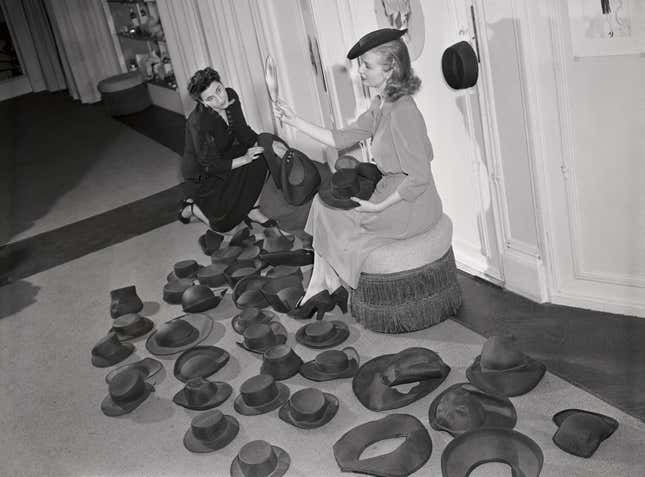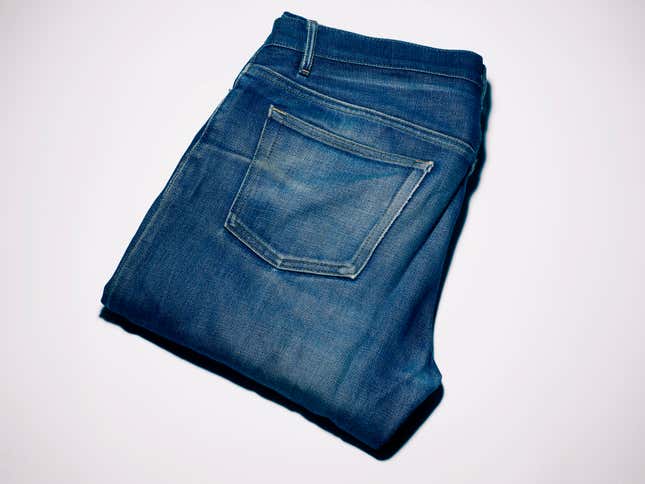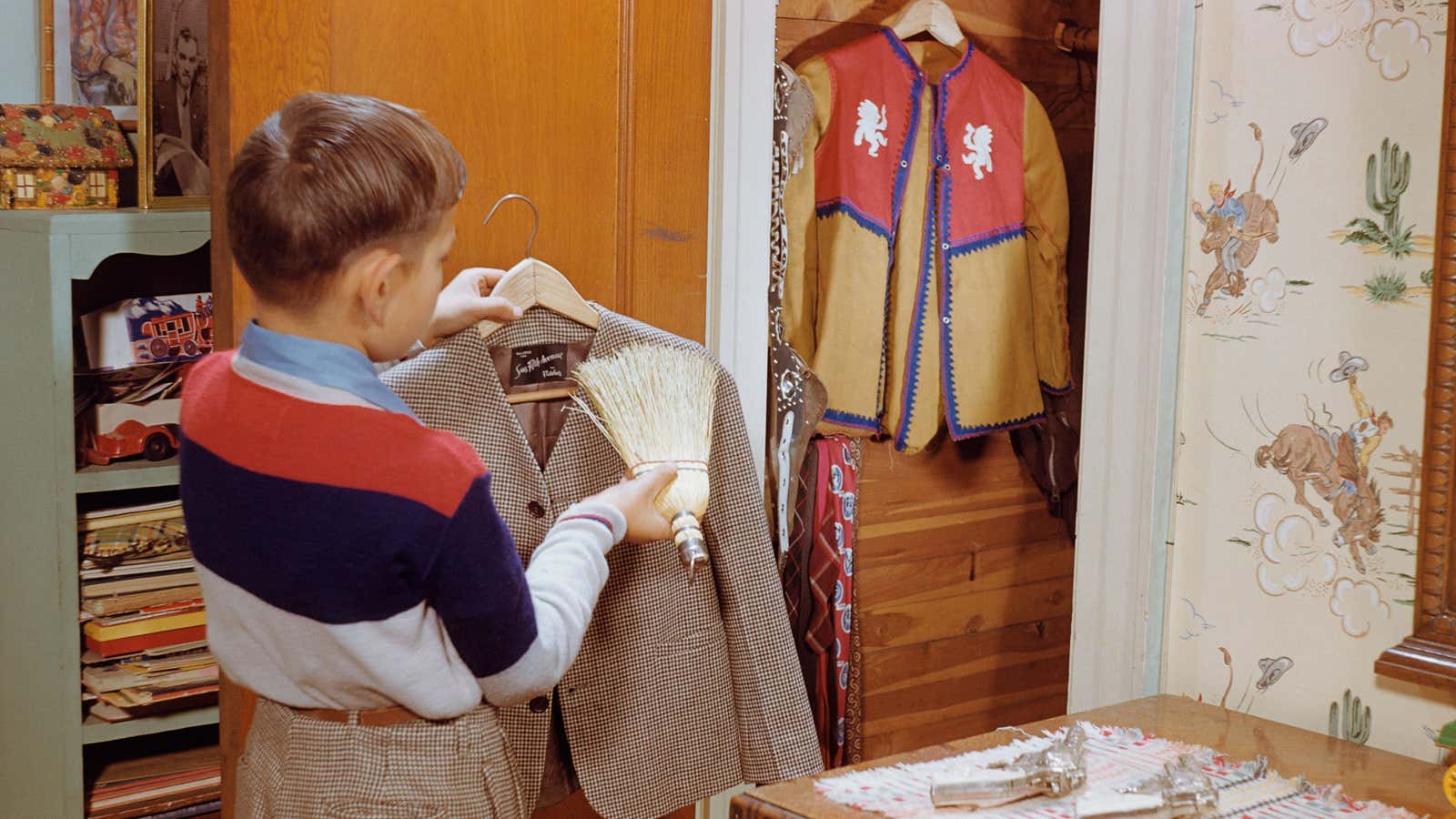Nothing gives me the “I wants” quite like springtime. I want a ruffled dress, a cotton-and-linen suit, orchid-pink clogs, a million bodysuits, and so on. But the fact is, these wants have less to do with any lack in my closet than the fact that I can’t see what’s in there. It’s just too stuffed.
When getting dressed feels daunting or uninspiring, the quickest and easiest course of action is to inject a bit of excitement into one’s wardrobe with something new. But if your closet is a clogged mess, it’s likelier that the joy of buying something fresh and new will be short-lived, before it disappears into the morass.
What I really want is a well-edited wardrobe that’s exciting and easy to dress from. And this is a problem that shopping won’t solve.
A good spring clean-out can though. You’ll likely find favorites you forgot about and make space by purging the pieces you’re done with—and in the golden age of resale, you’ve got options for where to take them. Once you have a clear sense of what’s in your wardrobe, it’s possible to actually see what’s missing. Then, a single, well-planned purchase (or even a joyful impulse buy—pink clogs!) can feel far more effective, and entirely justified.
Marie Kondo’s real genius tip: Clean by category

Whether or not you’ve read The Life-Changing Magic of Tidying Up, Marie Kondo’s phenomenally successful guide to cleaning out superfluous stuff, you are probably familiar with the premise: If an item doesn’t “spark joy,” get rid of it.
That’s fine—perhaps even life-changing—but there’s another key to the success of Kondo’s method: Clean by category, not by location. Make a pile of all your blouses, boots, bikinis, or whatever category you intend to edit and organize, and face them all at once—however horrifying that may be.
Last weekend, I tackled dresses. I emptied my tiny closet of them and was semi-appalled at the mass before me on my bed. Many were too wrinkly to wear, due to squishing, and there were some I’d frankly forgotten about because I couldn’t see them (also, due to squishing).
One by one, I picked up each dress and evaluated its place in my closet, and my life. A strapless floral Laura Ashley frock that was once my mother’s—a veritable joy explosion—was promptly put back in my closet for summer weddings. Other dresses were thanked (a Kondo-ism), and set aside. A spaghetti-strapped Cynthia Rowley gown I’ve worn to countless events over the last 15 years was still in great shape for many more—just not for me.
I only got through dresses, skirts, and jumpsuits, but it was such a satisfying start—and my closet feels so refreshed by that bit of breathing room—that I’m actually looking forward to diving back in for the blouses, jeans, and jackets.
What to do with the discards? Try to approach the bags of clothing produced by such a cleanout as an opportunity, rather than a burden. If you don’t want to deal with reselling your old clothes, just go ahead and donate items that are still wearable, or recycle those that are not. Racked has a great guide for where to do so in the US.
How to sell your non-designer clothes
If you live in a walking city like New York, you might consider a stoop sale as a way to spend the day socializing, cleaning house, and making cash. A pitcher of lemonade will attract customers and pay off in the long run.
Here in LA, I’ll take a few bags of tired sundresses and such to a local second-hand shop such as Buffalo Exchange or Wasteland, where I should get cash or store credit for whatever they’ll take. If you hate the schlepping and fear of rejection that comes with real-life reselling, you might try shipping a bag to ThredUp.
Designer clothes: TheRealReal, Vestiaire, Tradesy, and Grailed
A pair of barely worn Acne trousers, some mint-condition Rochas wedges… Here it’s a question of whether you’d rather set your own price, or you just want the items off your hands. If you don’t mind taking pictures and creating online listings, try eBay, Vestiaire, Tradesy, or for menswear, Grailed. If your items are in good condition and you want to outsource that work, try TheRealReal. There, the audience is primed for designer shopping, but you’ll have to give up a bit of commission and control.
Don’t forget your friends! That great suede skirt that you just don’t wear? Maybe your best friend, sister, or niece will. Snap a pic and ask if she’s interested. This is the most joy-sparking way, in my opinion, to see clothes get a second life (and lower-maintenance than a full-on clothing swap).

The luxury of clothes worth keeping: Repair, Re-wear
The closet clean-out can also bring fresh life to the clothes you hold onto. As Quartz fashion reporter Marc Bain recently wrote, in the age of disposable fashion, it’s the things we decide to keep again and again that are the most luxurious.
Marc used the example of jeans made from raw, 100% cotton denim as the ultimate in clothing that improves with age: ”In a year, the raw jeans will likely be better than when you bought them. But cheap, stretchy, pre-distressed pairs will often be best when you first bring them home from the store, and decline from there. When those raw jeans get a hole, you may actually want to patch them up and keep wearing them. When the other jeans start to rip, you’re more likely to toss them and get a new pair.”

Marc has two genius policies that facilitate a wardrobe filled with these sorts of garments: First, he resists impulse bargain shopping by actually setting a price floor for clothing, to intentionally buying just a few things of high quality. Second, he maintains a one-in, one-out policy in his closet, which is a good way to avoid squishing, and mindless shopping.
Along with the bags for donating and selling, I have a little pile for repairs: a vintage white blouse that needs a new button, a pair of Isabel Marant boots that need to be re-heeled. These pieces are totally repairable, and not easily replaceable. They’re also the sorts of longterm sustaining items I’ll look out for this spring. You might say they spark joy.
